Day 1 :
Keynote Forum
Andrea Nicolini
University of Pisa, Italy
Keynote: Hormone-immunotherapy in endocrine dependent metastatic breast cancer patients
Time : 09:45-10:20

Biography:
Abstract:
Keynote Forum
B Moon Kim
Seoul National University, Republic of Korea
Keynote: Extremely potent, pan-genotypic Hepatitis C virus NS5A inhibitors based on novel core structures
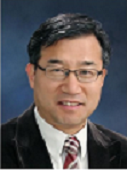
Biography:
B Moon Kim has completed his PhD and postdoctoral studies at M.I.T. After 5 year experience at Merck Research Laboratories in USA, he took a faculty position at the Chemistry Department of Seoul Naitonal University in Seoul, Korea. He was Chemistry Department Chair and Director of the BK21 Chemistry & Molecular Engineering Division at SNU. He has published more than 120 papers and 25 patents and has been serving as an editorial board member of Bioorganic Medicinal Chemistry and Bioorgnaic & Medicinal Chemistry Letters and an editor-in-chief of Bulletin of the Korean Chemical Society
Abstract:
Hepatitis C virus (HCV) infection often leads to serious liver diseases such as cirrhosis followed eventually by hepatocellular carcinoma. Several HCV RNA gene products (NS2, NS3, NS4A, NS4B, NS5A and NS5B) involved in the reproduction of HCV have been instensively studied for new therapeutic target identification. Recently, combinations of direct acting antivirals (DAA) including HCV NS3/4A protease inhibitors such as boceprevir, telaprevir, paritaprevir, and grazoprevir, polymerase inhibitors such as sofosbuvir and dasabuvir, and NS5A inhibitors such as daclatasvir, ledipasvir, ombitasvir, elbasvir and velpatasvir have shown successful arrest of the infection. However, even with the new DAA’s, resistance to the drugs in patients infected with various strains of HCV has emerged. Therefore development of effective anti-HCV drug candidates possessing pan-genotype activities is still needed. Herein we report the discovery of a series of extremely potent HCV NS5A inhibitors based on a few new core skeletons. From these efforts, we have identified a series of NS5A inhibitors that exhibit highly potent anti-HCV activities particularly against several genetic variants and some mutant strains. Several interesting compounds were further evaluated with other studies and are shown to be nontoxic and anticipated to be effective HCV drug candidates.
Keynote Forum
Paola Ferrari
University of Pisa, Italy
Keynote: Biomarkers in cancer immunotherapy
Time : 11:20-11:55

Biography:
Paola Ferrari graduated in Medicine and Surgery at Pisa University in 1995 (full marks), specialized in Internal Medicine in 2000, PhD in Medical Physiopathology and Pharmacology. She works as medical oncologist at Unit of Oncology 1, Department of Oncology, New Technologies and Transplantations, University of Pisa. Clinical activity: follow-up and therapy of cancer patients, mainly breast cancer patients. Principal fields of research: breast and gastrointestinal cancer follow-up and therapy, breast cancer biomarkers and prognostic factors, cancer immunology, circulating tumor cells, cancer stem cells. Dr Paola Ferrari is author/co-author of about 50 articles in peer reviewed journals. She regularly serves as reviewer for international oncology journals.
Abstract:
Immunotherapy has gained increasing consent in different types of advanced and/or metastatic cancer. More recently, checkpoint inhibitors have been extensively studied and in some cases they have been approved by regulatory authorities for cancer therapy. However, only a minority of patients exhibits a durable response to immunotherapy, while toxicity and costs of these treatments are not insignificant. In this view, biomarkers predicting response, resistance and toxicity should be important for a better selection of patients. PD-L1 expression, TIL identification and characterisation, mutation load, microsatellite instability, MDSCs, IDO, IFN-gamma/Jak pathway mutations are some of these markers. Due to the complexity of immune response, the identification of reliable markers is difficult and research is in progress.
- Traditional Medicine| Further Tests for Breast Cancer | Novel Drug Discovery & Drug Delivery | Case Study and Case Report on Breast Pathology | Organic Chemistry & Inorganic Chemistry | Breast Pathology Treatment
Location: Vancouver, Canada
Session Introduction
Chang Yun Wang
Ocean University of China, China
Title: Marine bioactive natural products from coral-derived fungi collected from the South China Sea

Biography:
Chang-Yun Wang received his PHD. degree in marine drugs from Ocean University of China, Qingdao in 1999. From 2000 to 2002, he moved to University of Duesseldorf, Germany, and joined the research group of Prof. Dr. Peter Proksch as a DAAD fellow. Since 1995, he is a professor of marine pharmaceutical chemistry at Ocean University of China. He is a member of the Commission of Marine Drugs Special Committee, Pharmaceutical Association of China. He has published more than 100 papers in reputed journals and has been serving as an editorial board member of repute
Abstract:
Symbiotic microorganisms in corals have proven to be a rich source of structurally novel and biologically active secondary metabolites that have become interesting and significant resources for drug discovery. In recent years, during our ongoing study on bioactive natural products from the South China Sea, diverse bioactive secondary metabolites with variety structures have been isolated from coral-derived fungi, such as alkaloids, macrolides, anthraquinones, and peptides. For instance, a pair of new enantiomeric alkaloid dimers, (+)- and (−)-pestaloxazine A, with unprecedented symmetric spiro-[oxazinane-piperazinedione] skeleton, consisting of 22 carbons and 12 heteroatoms, were isolated from a Pestalotiopsis sp. fungus derived from the soft coral Sarcophyton sp.. A series of prenylated indole alkaloids were isolated from Aspergillus sp. fungus derived from the gorgonian coral Dichotella gemmacea. Quinazoline alkaloids with heptacyclic skeleton formed via a bridging hemiaminal linkage was isolated from Scopulariopsis sp. fungus derived from gorgonian Carijoa sp. Prenylated dihydroquinolone derivatives were obtained from the fungus Aspergillus sp. cultured from gorgonian Muricella abnormalis. And a series of 14-membered resorcylic acid lactones (RALs) belonging to a family of benzannulated macrolides were obtained from a gorgonian-derived fungal strain Cochliobolus lunatus. The compounds exhibited diverse promising bioactivities, including antifouling activity against barnacle B. amphitrite, antibacterial activity towards pathogenic bacteria, cytotoxicity against human tumour cell lines, and antiviral activity against human respiratory syncytial virus (RSV) and enterovirus 71 (EV71). It could be concluded that the bioactive secondary metabolites produced by coral-derived symbiotic microorganisms should be a rich source for discovery of marine lead compounds.
Nira Ben Jonathan
University of Cincinnati, USA
Title: Dopamine receptor Type 1 (D1R) in breast cancer: Expression, signaling, and therapeutic applications
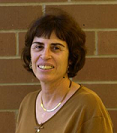
Biography:
Nira Ben-Jonathan published 175 manuscripts, edited one book, and contributed 12 chapters to textbooks and encyclopedias. She mentored 65 students, fellows and research scientists. She was awarded the NIH Research Career Development Award, was elected Fellow of the AAAS, and elected Chairman of the Gordon Research Conference on Prolactin. She received the Rieveschl Award for Outstanding Scientific Research, and the Edward Merker Lectureship in Translational Endocrinology. Over the years, she served as a member on numerous study sections of the NIH, DOD, and the Komen foundation, and as chairman on five NIH study sections.
Abstract:
Dopamine (DA) is a catecholamine which acts as a neurotransmitter in the brain and as a circulating hormone in the periphery. DA binds to five G-protein-coupled receptors, classified by their ability to increase cAMP (D1R and D2R) or decrease cAMP (D2R, D3R and D4R). We discovered D1R overexpression in breast cancer cell lines and tumors, thus identifying this receptor as a biomarker and a novel therapeutic target in breast cancer. Using tissue microarrays, D1R was overexpressed in 30% of 751 primary breast carcinomas, and was undetectable in normal breast tissue. D1R overexpression was associated with larger tumors, higher grades, node metastasis, and shorter patient survival. Unexpectedly, selective D1R agonists signal via the cGMP/protein kinase G (PKG) pathway. Activators of this pathway suppressed cell viability, inhibited cell invasion, increased chemosensitivity, and induced apoptosis in breast cancer cell lines. Fenoldopam, a peripheral D1R agonist which does not penetrate the brain, dramatically suppressed growth of D1R-expressing xenografts in two mouse models by increasing both apoptosis and necrosis. We also developed a fluorescent imaging method for D1R-expressing tumors and metastases in these mice. Ongoing studies are optimizing a positron emission tomography (PET) imaging for detecting D1R-expressing tumors in patients. In conclusion, D1R overexpression is associated with advanced disease and poor prognosis. Activation of the D1R/cGMP/PKG pathway induces apoptosis in vitro and causes tumor shrinkage in vivo. Fenoldopam, which is FDA-approved to treat acute renal hypertension, could be repurposed as a novel therapeutics for a sub-population of patients with D1R-expressing breast tumors who fail to respond to conventional treatments.
Hiromi Ii
Kyoto Pharmaceutical University, Japan
Title: A novel prodrug of gamma glutamylcyclotransferase inhibitor has anti-proliferative activity in-vitro and anti-cancer activity in-vivo
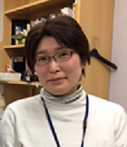
Biography:
Hiromi Ii has completed her PhD at Kyoto Pharmaceutical University in 2008 and postdoctoral studies at University of Washington. She is an assistant professor of the Department of Clinical Oncology, Kyoto Pharmaceutical University.
Abstract:
C7orf24 was discovered as a highly expressed protein in bladder cancers by a proteomic analysis and later identified as the ï§-glutamylcyclotransferase (GGCT). The silencing of GGCT using siRNA inhibited cancer cell proliferation and tumor growth in mice inoculated with cancer cells. However, the relationship between GGCT enzymatic activity and these phenotypes remained unknown. Therefore, we tried to identify a potent GGCT inhibitor and investigated its anti-cancer activity in vitro and in a xenograft mouse model. We performed a screening of GGCT inhibitors from 41 candidate compounds, and identified N-glutaryl-L-Ala (GA) that showed the highest inhibitory activity. Next, we used a NBD fluorochrome-tagged GA, Nα-glutaryl-L-Lys (NBD), to evaluate cell permeability. However, no signal derived from NBD was observed inside cells. In order to improve its permeability, we generated a less polar prodrug “Nα-methoxyglutaryl-L-Lys(NBD)-OCH2OCOCH3 (Me-gKFA-AM)” where carboxylates in the structure of the parent inhibitor were substituted by alkyl esters. As had been expected, Me-gKFA-AM was successfully internalized into the cells and conversion of the prodrug into the parent drug in MCF-7 breast cancer cells was confirmed by HPLC. We demonstrated anti-proliferative activity of the methyl-acetoxymethyl ester prodrug of GA (pro-GA) in human MCF7, HL-60, and PC3 cancer cells in vitro. Moreover, pro-GA administration exhibited anti-cancer effects in a xenograft model using immunocompromised mice inoculated with PC3 cells. These results indicate that the pro-GA may be promising as a lead compound to inhibit GGCT activity for the novel cancer therapeutic strategy.

Biography:
After receiving a diagnosis of Stage 3.C/4 incurable cancer, I desperately needed to put some fun back into my life again or the fear of this disease was going to be deadly for my health. Recalling my travel memories, these were some of the happiest moments of my life. They were the moments when I felt most alive. While undergoing treatment, I daily visualized memories of my past travels to Italy and Ireland. It wasn't always easy for me to do. But eventually, my experience of cancer turned into a healing adventure. Remarkably, within less than 6 months, I was completely cancer FREE. Since then I have been able to confidently and consistently make my travel dreams come true even though at the time I was barely making enough to scrape by. By using a 5 step process that enabled me to turn a battle with cancer into a healing adventure, I now empowers others with the tools to transform their obstacles into their greatest assets. I am also the author of the book, “Passport to Life — How I Overcame Incurable Cancer through the Power of Travel.”
Abstract:
The fear of cancer can cause more harm than anything else. This fear propels people to take immediate action out of a sense of urgency — but often not the right kind of action. Oftentimes, those who are diagnosed with cancer end up submitting themselves to all manner of treatments and so-called cancer cures in the hopes of surviving their disease. However, the less focused one is in the healing process, the more anxiety this creates. Without any strategic long-term planning, if the only objective is to get through cancer treatments, the end result can be disastrous. What I offer is a way to turn fear into focus so that those who are struggling with cancer have absolute clarity to move forward.I teach people how to incorporate the concepts of travel into daily living so they can experience more joy, more healing, and a greater sense of adventure in their lives — even while they are coping with cancer.
Sang Hoon Han
Sungkyunkwan University, Republic of Korea
Title: One-pot synthesis of oxindoles through C-H activation and evaluation of anticancer activity
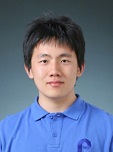
Biography:
Sang Hoon Han is a student for Master and Ph.D combined Course in School of Pharmacy, SKKU.
Abstract:
The oxindole skeleton has been recognized as a ubiquitous heterocycle found in bioactive natural products and synthetic compounds with medicinal applications. In particular, 3-substituted and spiro oxindole derivatives have been implicated in a wide spectrum of biological activities including serotonergic, anti-tumor, anti-Alzheimer’s, anti-Parkinson disease, glycoprotein-mediated MDR inhibition, anti-bacterial and anti-inflammatory activities. Additionally, oxindoles serve as synthetic precursors to a range of other heterocyclic compounds including indoles and isatins. Therefore, the development of novel and highly efficient strategies for the formation of oxindole architectures is an area of great interest in organic synthesis. With recent advances in direct and catalytic C–H functionalization, a great deal of effort has been devoted to the formation of oxindoles via transition-metal-catalyzed or metal-free oxidative C−H functionalization events. Among reported examples, the tandem cyclization of acrylamides has attracted much attention for the synthesis of various functionalized oxindoles. Other routes rely on the Ir- or Cu-catalyzed intramolecular cyclization of β-keto amide derivatives. Moreover, the Ag- or Rh-catalyzed aromatic C−H functionalization of α-diazoamides is another effective way to construct C3-functionalized oxindoles. However, these methods require specifically functionalized starting materials and result in a special subclass of oxindoles. With a rational design based on C−H addition and subsequent cyclization process, we herein reported efficient access to the formation of oxindoles through Rh(III)-catalyzed site-selective alkylation of azobenzenes and internal olefins, such as maleimides, maleates and fumarates, followed by reductive intramolecular cyclization. Particularly noteworthy was the resulting 1-amino-indolic framework, which represents a biologically important scaffold found in various synthetic molecules. Thus, synthesized oxindoles were evaluated for cytotoxicity against human prostate adenocarcinoma cell lines (LNCaP), human breast cancer cell lines (MCF-7), human Ovarian Cancer Cell lines (SKOV3), human lung carcinoma cell lines (A459) and human renal adenocarcinoma cell lines (786-O).
Genna Zimmel
Founder of The Deborah Zimmel, Canada
Title: The risks of triple negative breast cancer (TNBC): The need for greater awareness, education & support

Biography:
Deborah Zimmel Triple Negative Breast Cancer Foundation .The Deborah Zimmel Triple Negative Breast Cancer Foundation was established in 2016 by Deborah’s husband and daughters as the first foundation in Canada with a specific mandate to provide greater support, education and awareness surrounding the lack of targeted triple-negative breast cancer treatment plans.
Abstract:
Triple-Negative Breast Cancer (TNBC) tends to be more aggressive, more likely to recur or spread, and more difficult to treat. This is because most chemotherapies target one cancerous receptor, where as triple-negative breast cancer is diagnosed based upon the lack of three receptors known to fuel typical breast cancers. For patients with triple-negative breast cancer, prognosis is poor, and there are no targeted therapies available, leaving chemotherapy-based regimes as the only treatment option. Despite the best treatment plans, five-year disease-free survival rates for women with triple-negative breast cancer are about 50%, and nearly all patients who develop distant metastasis die of the disease. So is true in the case of Deborah Zimmel, who was diagnosed incorrectly with stage 4-breast cancer in 2013 and shortly there after underwent a double mastectomy followed by a year of chemotherapy treatments and radiation. It came as a sock in 2014 uncovering that her cancer had metastasized and she was triple-negative breast cancer positive all along. Deborah underwent a second round of unsuccessful chemotherapy treatments and sadly, she passed away from Leptomenningeal Carcinomatosis in September, 2015. This was a devastating and exasperated journey for Deborah and her family driving the establishment of the Deborah Zimmel Triple Negative Breast Cancer Foundation based the evident need to aid in the areas of awareness, education and support surrounding triple-negative breast cancer. Currently, researchers are working to identify novel drug targets and treatment strategies to more effectively treat, manage and hopefully cure triple-negative breast cancer. This is something the Mayo Clinic Breast Cancer SPORE (Specialized Program of Research Excellence) is working to achieve. Much of the research is in its preliminary testing phases, namely, immunotherapy, which has demonstrated responsiveness in some patients with triple-negative breast cancer, signalling a potential role for immunotherapy in this tumor type. Secondly, the therapeutic activation of ERβ, this project arose from the discovery that up to 30% of triple-negative breast cancer tumors express a second form of the estrogen receptor known as ERβ and it is hypothesized that therapeutic activation of ERβ will result in clinical benefits for patients with ERβ-positive triple-negative breast cancer. Lastly, genetic testing for mutations in breast cancer predisposition genes is a crucial study for triple-negative breast cancer prevention. Women found to have mutations in the cancer genetic panel genes will receive accurate information about their risks of cancer. This is expected to lead to improvements in the use of mammography screening, MRI screening and prophylactic surgeries as it relates to triple-negative breast cancer. The need for quality triple-negative breast cancer prevention and treatment plans is at the top of many oncologist lists, but there is a great deal more work that must be done.
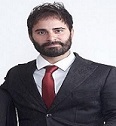
Biography:
Antonio Feula is a PhD Chemist with 10 years of research experience in organic multi-step synthesis, drug discovery, surface chemistry, medicinal and supramolecular chemistry. Expertise ranges from multi-step synthesis (designing and performing) to chromatography (sample isolation, purification) and NMR methodologies. He has been part of several cross-functional teams including engineers, chemists and biologists. Antonio was a post-doctoral research fellow at the University of Reading and Oxford before moving to USA where he worked for Merck, Coty and Orthobond. He is currently involved in the drug discovery of small molecules for genetic heart diseases at Myokardia in South San Francisco.
Abstract:
Room temperature iodocyclisation of homoallylamines stereoselectively delivers functionalised 2- (iodomethyl)azetidine derivatives in high yield. Increasing reaction temperature from 20 °C to 50 °C switches the reaction outcome to realise the stereoselective formation of functionalised 3-iodopyrrolidine derivatives. It was shown that these pyrrolidines are formed via thermal isomerisation of the aforementioned azetidines. Primary and secondary amines could be reacted with iodomethyl azetidine derivatives to deliver stable methylamino azetidine derivatives. With subtle changes to the reaction sequences homoallyl amines could be stereoselectively converted to either cis- or trans- substituted 3-amino pyrrolidine derivatives at will. The stereochemical divergent synthesis of cis and trans substituted pyrrolidines supports an ion part, aziridinium, isomerisation pathway for azetidine to pyrrolidine isomerisation. Six azetidine derivative were probed in a zebrafish embryo developmental assay for capacity to illicit morphological changes. The range of effects across the probed molecules demonstrates the suitability of this assay for screening azetidine derivatives. One of the probed molecules, exhibited particularly promising effects in the developmental assay.
